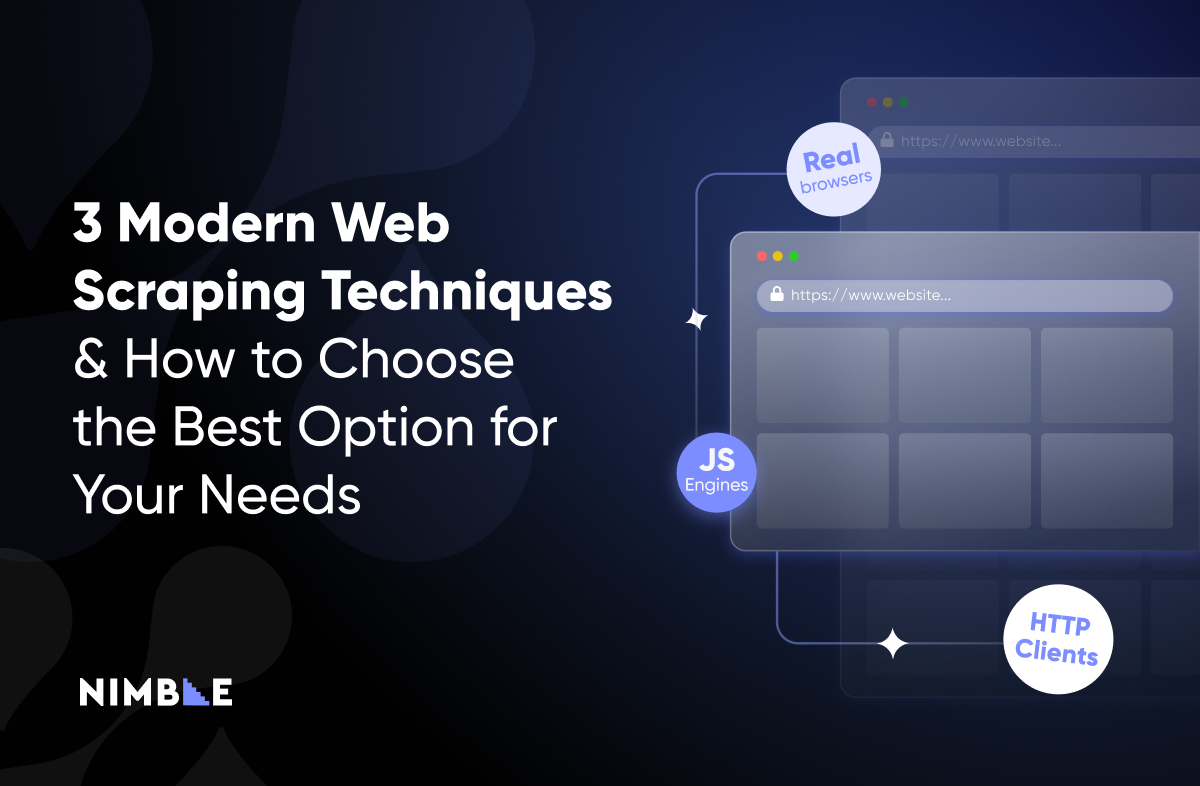Selenium vs Puppeteer: Which Web Automation Tool is Right for You?


Introduction
In the world of web automation, two tools stand out: Selenium and Puppeteer. Both of these tools are popularly used for automating web browsers to carry out tasks such as testing, scraping, and even scripting. While they share some similarities, there are significant differences between them that are worth considering before choosing which tool to use for a particular project.
In this article, we'll explore the differences between Selenium and Puppeteer, including their features, performance, ease of use, and more. By the end of this article, you'll have a better understanding of which tool to choose for your web automation needs.
Starting off with Selenium
Selenium is a popular web browser automation tool that has been around for over a decade. It was originally developed by Jason Huggins in 2004 while he was working at ThoughtWorks. Selenium's primary function is to mimic user interactions on web browsers - think of it as your virtual finger clicking on links, typing text, and submitting forms.
Selenium’s open-source nature has fostered a vast community of developers contributing to its development and offering support. Plus, it's multi-lingual! Selenium can converse with a variety of programming languages, such as Java, Python, C#, Ruby, and JavaScript.
Introducing Puppeteer
Puppeteer is a relatively new web automation tool that was developed by Google in 2017. Like Selenium, Puppeteer automates web browsers, but it was designed specifically for use with Google Chrome. Puppeteer provides a high-level API that enables users to control Chrome and Chromium through Node.js.
Puppeteer is also open-source and has quickly gained popularity thanks to its user-friendly nature and speedy performance.
Comparing Features
When it comes to web automation and testing, both Selenium and Puppeteer stand out with their robust features. While they both excel at page navigation, form completion, and capturing screenshots, their true strengths emerge when you look under the hood.
Selenium is the trusty multi-lingual friend that speaks to a wide array of web browsers including Google Chrome, Firefox, Microsoft Edge, and Safari. It's an essential companion for developers and testers who need to ensure their applications perform optimally across various browsers.
Puppeteer, on the other hand, is a Chrome connoisseur, taking full advantage of Chrome's sophisticated capabilities such as headless browsing, network interception, and PDF generation. Its crowning glory, however, is its ability to capture critical performance metrics such as page load times, time to first byte (TTFB), and time to interactive (TTI) through its Tracing API.
While both tools offer compelling benefits, the decision between Selenium and Puppeteer boils down to your specific needs. Are you looking to automate a wide range of browsers, or do you require Chrome's advanced features and performance metrics? Choose your tool wisely and pave your way to seamless web automation and testing.
Performance Face-off
Performance is a critical factor when selecting a web automation tool. Both Selenium and Puppeteer strive to deliver on this front, but they offer different experiences.
Selenium's performance largely depends on the language and driver used. The tool pairs well with strongly-typed languages like Java and C#, yielding faster outcomes. However, Selenium tends to consume more memory, which could lead to slower operations when managing larger web pages.
On the other hand, Puppeteer delivers strong performance across the board. It communicates directly with Chrome and Chromium via the Chrome DevTools Protocol. Puppeteer is also more memory-efficient, which makes it ideal for handling larger web pages effectively.
To conclude, the choice between Selenium and Puppeteer comes down to your specific requirements. Selenium is more suited for projects requiring diverse browser testing, while Puppeteer excels in handling large pages or when Chrome-specific features are necessary.
User Friendliness
Both Selenium and Puppeteer are fairly user-friendly, but there are some nuances.
Selenium's API can feel a bit complicated due to its multi-language support. You'll need to familiarize yourself with a language-specific API, which might take some time. Also, for each browser you want to automate, you'll need to set up a specific driver executable with Selenium, which can feel a bit tedious.
For example, a simple helloWorld request with Selenium using Node.JS might look like this:
const {Builder, By, Key, until} = require('selenium-webdriver');
(async function run() {
let driver = await new Builder().forBrowser('chrome').build();
try {
await driver.get('https://www.google.com');
let title = await driver.getTitle();
console.log(title);
} finally {
await driver.quit();
}
})();Puppeteer, on the other hand, offers a more streamlined experience. Thanks to its high-level API and exclusive focus on Chrome and Chromium, you're spared the task of setting up different driver executables. Puppeteer's relatively easier setup and speedy performance have made it a popular choice among developers who primarily target Chrome.
A similar example with Puppeteer would look like:
const puppeteer = require('puppeteer');
async function run() {
const browser = await puppeteer.launch();
const page = await browser.newPage();
await page.goto('https://www.google.com');
const title = await page.title();
console.log(title);
await browser.close();
}
run();A New Contender: Nimble Browser
While Selenium and Puppeteer are established web automation tools, there's a new entrant that's making a big impact in the data-gathering domain: the Nimble Browser. Engineered for the sole purpose of data collection, Nimble Browser brings unique capabilities to the table that set it apart.
The Nimble Browser is an automated tool that includes advanced anti-bot bypass systems powered by AI fingerprinting technology. This ensures that your data collection remains uninterrupted and efficient. Moreover, the in-built premium proxy service, Nimble IP, offers an AI optimization engine that adapts to your usage patterns, promising premium quality, performance, and reputation.
One of the standout features of Nimble Browser is its ability to scale flexibly to handle any workload. The serverless cloud environment offers infinite and flexible scalability, eliminating the need for managing any infrastructure on your part. This means you can focus solely on your data collection needs without worrying about the underlying technicalities.
In terms of data quality, Nimble Browser is a game-changer. Its advanced browser fingerprinting ensures clean and accurate data at any scale. And with premium proxies from around the globe, you can trust the browser to maintain impeccable data quality.
Nimble Browser uses a simple proxy interface that is programming language agnostic. For example:
import requests
proxies = {
'http': 'https://<nimble API user>:<password>@browser.webit.live:8888',
'https': 'https://<nimble API user>:<password>@browser.webit.live:8888'
}
headers = {
'x-nimble-country': 'US',
'Header': 'custom header value',
'x-nimble-render': 'true',
'x-nimble-parse': 'true'
}
response = requests.get('https://mytargetsite.com/', proxies=proxies, headers=headers)
print(response.text)Conclusion
As we've seen, Selenium, Puppeteer, and Nimble Browser each have their strengths in the realm of web automation. Selenium offers cross-browser support and a diverse range of programming languages, Puppeteer leverages Chrome's advanced features and offers excellent performance, while Nimble Browser brings AI technology, scalability, and data accuracy to the forefront.
Choosing between these three ultimately depends on your specific needs and circumstances. However, if you're looking for a tool that offers easy integration, advanced AI technology, and the ability to scale without worrying about infrastructure, Nimble Browser is a compelling choice to consider. It beautifully combines the power of automation with the sophistication of AI, delivering a seamless and efficient web scraping experience.
Ready to simplify your web data collection? Dive into the world of automated, scalable, and accurate web scraping with Nimble Browser!
FAQ
Answers to frequently asked questions


















